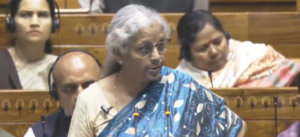“The Aurangzeb of popular memory bears only a faint resemblance to the historical emperor,” observes Audrey Truschke near the concluding section of Aurangzeb: The Man and the Myth. This indeed is her book’s central theme. In the slim volume, Truschke seeks to sift the man from the myth that has grown around him, especially in popular imagination, over the past couple of centuries.
Truschke burst onto the horizon of medieval Indian history studies just a year ago with her major work, Culture of Encounters: Sanskrit at the Mughal Court, in which she argues that the Mughal court generally, but especially between 1560 and 1660 (comprising the reigns of Akbar, Jahangir and Shah Jahan), greatly patronised not only the Sanskrit language but Sanskrit culture as part of their vision of governance. She bases her argument on an immense amount of in-depth research. The book is clearly meant for the professional medievalist.
The book under review here, on the other hand, is not only half the size of the first but is equally clearly meant for the lay reader, lighter to read with no footnotes and no complex arguments. As a historian, she is disturbed by the distance between professional knowledge and popular image of the man and the emperor, and intervenes to minimise that distance without being an apologist for either the man or the emperor. “The multifaceted king had a complex relationship with Islam, but even so he is not reducible to his religion. In fact, little is simple about Aurangzeb. Aurangzeb was an emperor devoted to power, his vision of justice, and expansion. He was an administrator with streaks of brilliance and scores of faults. He grew the Mughal Empire to its greatest extent and may also have positioned it to break apart. No single characteristic or action can encapsulate Aurangzeb Alamgir…”
This indeed is the problem with seeking to minimise the distance between a professional estimate and the popular image of a ruler, any ruler. The historian looks at a ruler’s reign as constantly evolving in interaction with a whole complex array of opposing pulls and pressures – political, administrative, economic, cultural, religious, factional and so forth. In popular image, the ruler’s single characteristic is given and fixed and that characteristic is the unwavering driving force during his reign.
The argument that Aurangzeb’s war with his brother and rival Dara Shukoh was not a battle between orthodoxy and liberalism and that the two did not have their support base divided between the orthodox and liberals or the Muslims and the Hindus among the nobles who took sides has long been established in historiography. M. Athar Ali had demonstrated this in his book Mughal Nobility Under Aurangzeb, published in 1966. Aurangzeb had the support of 21 Hindu nobles of high ranks, including the legendary Rajputs Jai Singh and Jaswant Singh, and Dara had 24 on his side, none as grand as the two.
That Aurangzeb did not throw out all the Hindus and Shias from his court and administration on his accession or later is also commonplace among historians. That the number of Hindus in his nobility rose to the highest in Mughal history; that even as he ordered the demolition of a dozen or so temples, including those at Kashi and Mathura and built mosques on their ruins, he was also handing out lands and cash to other temples and maths and to Brahmins is also routinely recounted in history books. Aurangzeb composed a poem in Hindi in which he invokes the blessings of Vishnu, Brahma and Mahesh on his accession (see Manager Pandey, Mughal Badshahon ki Hindi Kavita).
Clearly, the emperor Aurangzeb was too multifaceted to be reduced to a single personal/religious identity. Indeed, no ruler ever is. Each ruler is faced with multiple, contradictory choices and is obliged to find an equilibrium among them. Sometimes the equilibrium succeeds; at times it doesn’t.
We hardly need to go all the way to the 17th century to appreciate this; much nearer our times, most of us would remember that Prime Minister Rajiv Gandhi, face to face with contradictory pressures from the Muslim clergy on the Shah Bano case and Hindu extremists on the Ram janmabhumi issue opted to placate both simultaneously. He didn’t succeed; nor did Aurangzeb. But the attempt on the part of both was to win over two competing sides simultaneously.
Is this too complex an argument for the lay person? Partly yes, for it does not fit into the picture of a single, unchanging characteristic of ruler. But more so, because far from the past shaping the present, it is the present which shapes the past. The political conflicts of the present demand the casting of images of the past. Aurangzeb wasn’t perceived as a hardcore religious zealot in his own time by historians, including several Hindu historians such as Bhim Sen and Ishwar Das; this image began to grow in the late 18th century and after, finding a firm footing in the colonial and nationalist historiography of the 20th century.
Today, when the entire political mobilisation of the ruling party is driven by the colonial “divide and rule” strategy and the Rashtriya Swayamsevak Sangh keeps propagating its social vision of the Muslim as the “other”, the demonic Aurangzeb comes in handy as the embodiment of all that is evil. History, of course, is everyone’s slave; everyone is her master, whether one is trained as an electrician or a dentist or has a PhD in chemical engineering, never mind a lifetime spent by professionals trying to unravel its complexities.
It is here that a learned intervention by a fine scholar such as Truschke to rectify the popular perception of Aurangzeb is likely to meet with resistance. For political exigencies dictate partial memorisation of history. Amnesia about the Marathas’ “secular” plunder of everyone they could, a lot of them Hindu rajas in Rajasthan, is almost unmentionable now, although it was part of history books down to the 1950s. But whatever image of Aurangzeb that caters to the political project of a Hindu rashtra will remain in circulation, never mind all the complexities the professional historians unearth. Who says history deals with the past? It is ever present. However, the case for history’s truth remains important for those not committed to its RSS version. The book is a valuable aid for arriving at that complex truth.
(Harbans Mukhia was professor of medieval history at Jawaharlal Nehru University. Courtesy: The Wire.)




